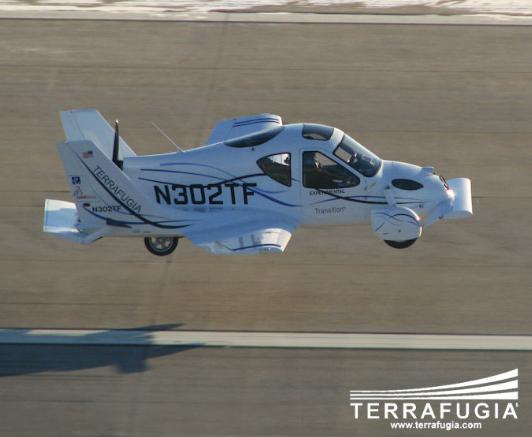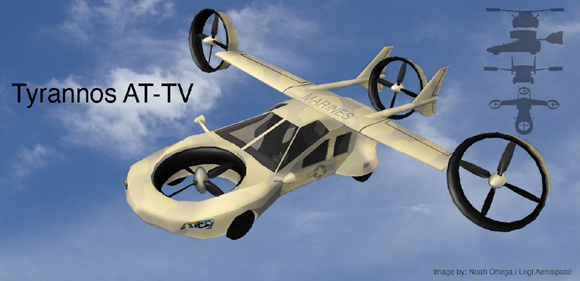Remember the “Flying Jeep” proposal? It’s still being pursued, as the initial funding for a flying gyrocopter/SUV has been awarded by DARPA:
Transformer TX, as we have previously reported, is intended to produce a vehicle able to drive on the ground with similar performance to a Humvee or other offroad vehicle. It must also be able to take off vertically with 1,000lb of passengers and payload aboard and fly about at altitudes up to 10,000 feet at speeds equivalent to normal light aircraft.
Perhaps best of all, the Transformer TX is also intended to be fully automated, capable of flying itself with only the most basic guidance from its human operator — who would not, therefore, need to be a highly trained pilot.
Admittedly, I know almost nothing about flying, but this sounds like getting something for nothing (that is, aren’t there laws of physics against this?):
The SR/C idea is basically a winged, propellor-driven light aeroplane with a set of free-spinning autogyro rotors on top. It’s not a helicopter: the engine can’t drive the rotors in flight, and a sustained hover isn’t possible. Nonetheless, though, the CarterCopter can take off vertically as required by Transformer TX rules.
It does this by having weighted rotor tips, meaning that a lot of energy can be stored in the spinning blades (rather as in a flywheel). Sitting on the ground, a small engine-driven “pre-rotator” assembly can gradually spin the rotors up to high speed. The pre-rotator, pleasingly, doesn’t have to transmit a lot of power — thus it is lightweight, cheap and simple compared to a helicopter’s transmission. Nor is the engine required to deliver the massive grunt required to keep chopper blades spinning hard enough to support the aircraft.
Once the rotors are at takeoff speed, the pre-rotator is declutched, the prop engaged and the pitch of the rotors pulled in so that they start to bite air. As they slow down, the energy stored in their whirling weighted tips blasts air down through the disc and the aircraft leaps vertically into the air in a “jump takeoff”.
Sounds amazingly like pulling yourself into the air by your own bootstraps . . .
Still, I’d like to eventually get that flying car I was promised all those years ago.





